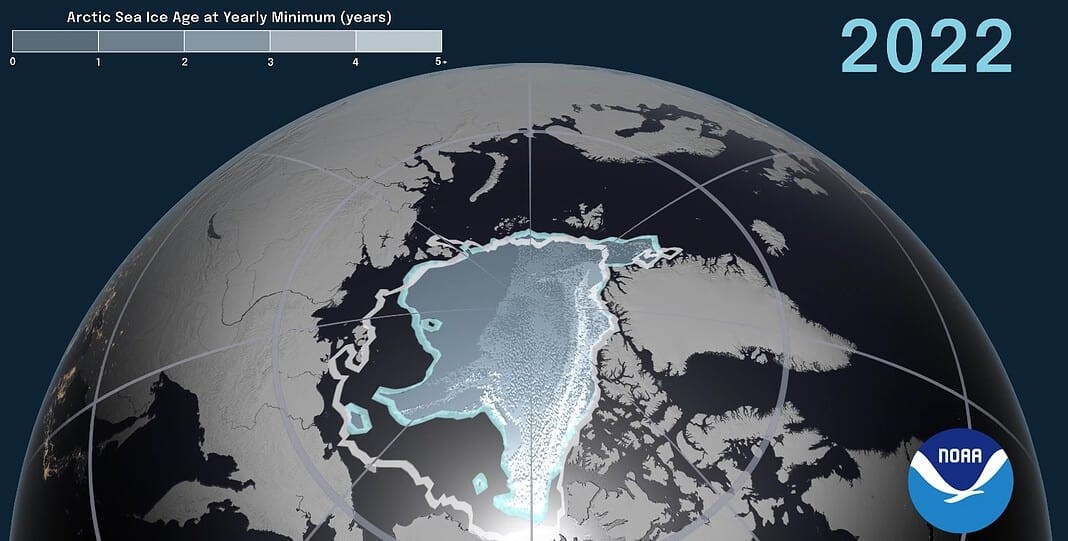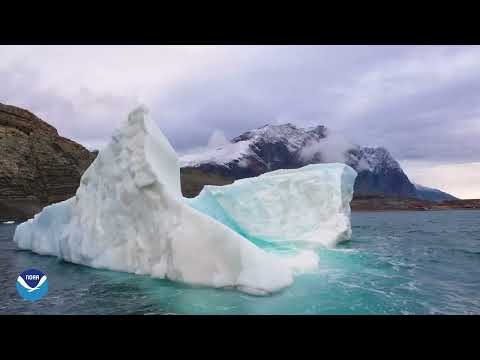In the past year, the Arctic region has seen a typhoon, smoke from wildfires and increasing rain, according to the US National Oceanic and Atmospheric Administration’s annual Arctic Report Card issued this week.
The Arctic Report Card provides a detailed picture of how warming is reshaping the once reliably frozen, snow-covered region which is heating up faster than any other part of the world.
This year’s document also features the most comprehensive chapter in the annual report’s 17-year history about how these dramatic environmental changes are felt by Arctic Indigenous people, and how their communities are addressing the changes.
The 15th chapter of the report card, authored by a team that includes Native Alaskan scientists, describes how warming air temperatures, shrinking sea ice, shorter periods of snow cover, increased wildfire, rising levels of precipitation and changes in animal migration patterns and their abundance profoundly affect the safety, food security, health, economic wellbeing and cultural traditions of Indigenous people.
According to Jackie Qatalina Schaeffer, a co-author of the chapter, director of climate initiatives for the Alaska Native Tribal Health Consortium and an Inupiaq from Kotzebue, Alaska:
“Living and innovating in Arctic environments over millennia, Indigenous peoples have evolved holistic knowledge that provides resilience and sustainability. Addressing the unprecedented environmental change requires listening to one another, aligning values and collaborating together as communities, businesses, governments, Indigenous and non-Indigenous scientists and decision-makers.”
NOAA Administrator Rick Spinrad added:
“With this important new chapter and other timely additions, the 2022 Arctic Report Card underscores the urgency to confront the climate crisis by reducing greenhouse gasses and taking steps to be more resilient. The report provides observations and analysis to help build a Climate-Ready Nation in a region on the front lines of climate change.”
Some of the findings include:
“Arctic sea ice extent (coverage) was higher than many recent years, but much lower than the long-term average. Multiyear ice extent, sea-ice thickness and volume rebounded after a near-record low in 2021, but was below conditions in the 1980s and 1990s, with older ice extremely rare. Open water developed near the North Pole for much of the summer, allowing polar-class tourist and research vessels easy access. The Northern Sea Route and Northwest Passage were also largely open.
“Satellite records from 2009 to 2018 show increasing maritime ship traffic in the Arctic as sea ice declines. The most significant increases in traffic are occurring among ships traveling from the Pacific Ocean through the Bering Strait and Beaufort Sea. This opens economic opportunities for new trade routes and also poses potential human-caused stresses on Arctic people and ecosystems.”
For more info on the report card, click here or check out the video below.
NOAA just released the 17th annual #ArcticReportCard! ?
This year the Arctic had:
– The 6th warmest year over Arctic land ?
– Arctic sea ice extent similar to 2021, but lower than average?
– Unusually low terrestrial snow cover ??Learn more at https://t.co/3BSQOA1DTo pic.twitter.com/mF56efcJcI
— NOAA Research (@NOAAResearch) December 13, 2022


